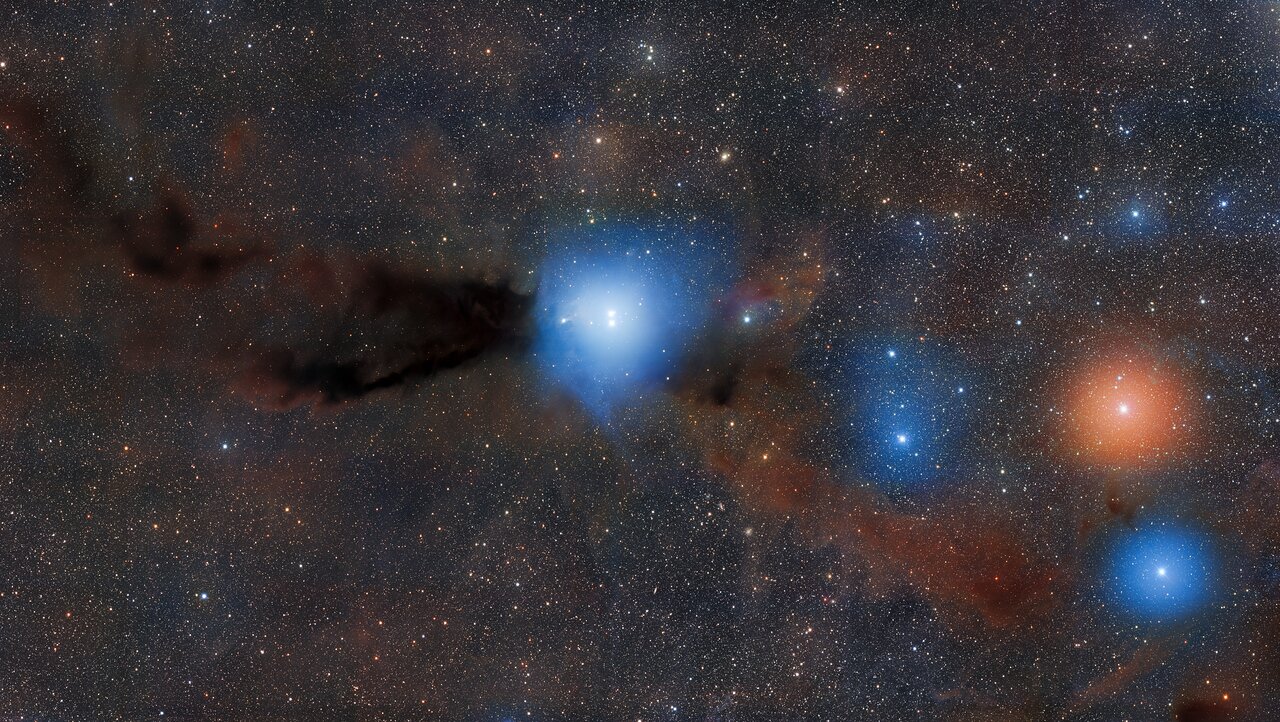There are some astronomical images that capture rapturous beauty, with their brilliant colors and interplay of shadow and light. A beautiful image can be enough to stir the soul, but in astronomy they often also have a story to tell. An example of this can be seen in a recent image released by NSF’s NOIRLab.
It was captured by the Dark Energy Camera at the Cerro Tololo Inter-American Observatory (CTIO), and shows the region surrounding the dark nebula known as Lupus 3. This cold region of gas and dust spans 24 Moon-widths in the southern sky, and is a region where stars are forming. Two of these birthing stars can be seen in radiant blue near the center of the image. Known as HR 5999 and HR 6000, they are only about a million years old. They are so young that their cores haven’t collapsed enough to begin fusing elements. Instead, their brilliant light and heat are produced through gravitational collapse, where their material is squeezed and heated by their own weight.

There are younger stars scattered within the dark nebula. They are smaller and cooler, but will soon evolve into T Tauri protostars before becoming full-fledged stars. You can see hints of their light in the cloudy region to the right of the blue stars.
The Lupus 3 nebula is only about 500 light-years from Earth, so it gives us an amazing view of the early periods of star formation. It is also part of a larger collection of gas and dust known as the Lupus cloud complex. These dark nebula regions are so wide it can be difficult for telescopes to capture in detail, which is why the Dark Energy Camera is so useful. It was primarily designed for the Dark Energy Survey, which observed more than 300 million distant galaxies in order to study dark energy. But with its ability to capture more than four Moon-widths in a single image, it is a perfect tool for studying nebula such as Lupus 3.
You can find more detailed images and a few animations of the region on NOIRLab’s Website, and its worth checking out. Particularly the zoomable image, where you can focus in on subtle details. It’s an amazing image, and it will help astronomers understand how clouds become stars and light.
Reference: NOIRLab Photo Release: “Radiant Protostars and Shadowy Clouds Clash in Stellar Nursery” noirlab2313 (2023)

